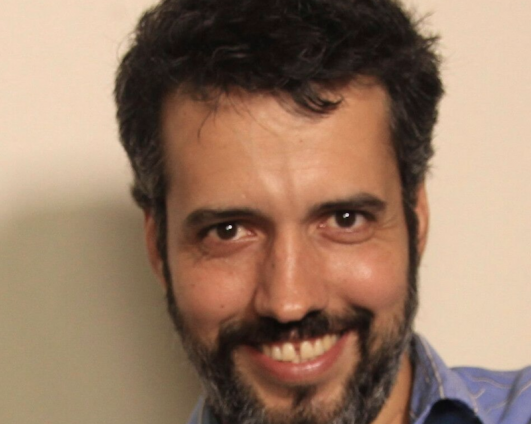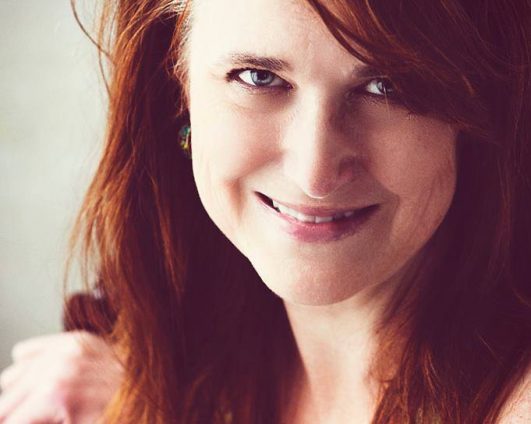Co-Creation in Context
André Paz – Co-Creation and Social Innovation in the Brazilian scene
Kathleen M. Ryan – The “Insta”-documentary: Social Media, Agency, and Interactive Storytelling
David Green – Configuring Participation in i-docs: Insights from Fieldwork 2014-2017
Co-Creation and Social Innovation in the Brazilian scene
Brazil presents an incipient scene of interactive, collaborative, immersive and multiplatform
documentary production. The Brazilian production does not keep up with the volume and
sophistication of international projects, but it presents creative proposals, developed with much
more limited funds. As in the entire Latin America, the Brazilian production has a connotation
of engagement in social issues (issue driven). Many projects are funded with resources coming
from the civil society or through public callings which aim at social projects. It is the case, for
example, of the multiplatform documentary Som dos Sinos (2015-2017) [somdossinos.com.br].
Although, there is no systemized critical debate on co-creation methodologies in the country on
this specific field, the Brazilian production has several projects based on co-creation principles
and practices, such as Som dos Sinos, Bexiga Existe (2016) [bixigaexiste.com.br] or Ilha
Grande: each beach an island, each island a story (2016) [ ilhagrandewebdoc.website].
I-Docs: The Evolving Practices of Interactive Documentary (Aston, Gaundenzi and Rose, 2017)
has a section called ‘Co-Creation’, organized by Mandy Rose, where authors discuss other
examples and their engagement strategies and design approaches, such as Fort McMoney
(2013), Question Bridge: Black Males (2012) and The Quipu Project (2015). Contrasting with
the international cases, this work presents an evaluation about how the Brazilian cases organize
their dynamics of Co-creation. Which are the purpose, propositions, assumptions and results of
its activities? More specifically, how does they approach the issue of resource limitation in the
Brazilian scenario? The contributions are seen by the perspective of a relational aesthetics for
the new documentary forms, as the author has been developing for the last years. His research
explores how the creative process in this field relates to the concept of dispositive: project,
product format and interaction practices among the team, participants, audience throughout the
conception and production process. In which sense can we talk about these initiatives like
Social Innovation cases?
The “Insta”-documentary: Social Media, Agency, and Interactive Storytelling
Dick Hebdidge argues that subcultures offer symbolic forms of resistance to mainstream culture,
providing ecosystems where dominant ideology can be challenged and negotiated. One modern
subculture where this sort of negotiation is taking place is pin up, where women (and sometimes
men) dress in vintage (or vintage-style) clothing while advocating for greater acceptance of
body-positive standards, often via online social media platforms rather than in “real” life. The
pin ups engage in a type of fourth wave feminism, a largely online community where women and
trans or gender-fluid men use their positions as “social media pin ups” to advocate for social and
political change.
As such, the community has a strong sense of ownership into how its world is portrayed. As a
filmmaker documenting this subculture, I actively considered how and when to give the
community control in the telling and shaping of its story. Two platforms particularly suited to
this project are Instagram and Facebook, where models and fans congregate.
This presentation will look at how this documentary project has used these social media
platforms within a larger interactive documentary project, via two case studies. In one case, the
project feed was given over to a model who toured California; she offered interviews and
personal anecdotes at various locations she visited (including Disneyland, a store for vintage
reproduction clothing, and a historical hotel). In the other case, the project itself used Instagram
as a casting call, promoting potential “characters” to be featured in the interactive film, allowing
audience members to vote on their favourites.
The results offer lessons in what can go right — and wrong — when a project director gives up
authorial control. The instant nature of social media can be quite beneficial, offering a new voice
uncensored by the typical editorial gatekeeping that happens within documentary storytelling,
providing facets of the story the would otherwise be restricted by budget or geographical access,
or allowing the audience to determine who they prefer to be a part of the project itself. But there
are also challenges: people attempting to game the system as a way to chase internet fame, a
volunteer producing content irregularly or not to traditional professional standards, or people
giving the project more status that it needs or deserves. Engaging audiences and potential
characters through social media offers innovative new dimensions to interactive storytelling, but
directors should proceed with caution.
Configuring Participation in i-docs: Insights from Fieldwork 2014-2017
At i-Docs 2014, I presented a provocation entitled How (and Why) Might We Build a “User-
Centered” Documentary Production Workflow? Four years on, I will revisit these questions in
the light of developments in both documentary and digital technology over the last four years.
Distilling insights from several recent i-Doc productions, as well as my own documentary-
making/research fieldwork*, I present techniques for “configuring participation” (Vines, 2013)
in various kinds of ‘user-centered’ documentary.
User-centered is a term that usually describes engaging ‘users’ in design (Norman, 1986).
‘Users’ tend to be people who are not designers, but have some investment-in or knowledge-
of a relevant area; ‘user-centered design’ involves balancing designers’ (design) knowledge
and users’ (contextual) knowledge. A well-known example of ‘user-centered design’ is
‘participatory design’ (PD). PD was pioneered in Scandinavia in the 1970’s as a way of
engaging workers in the design of their workplace; from the outset, in a process framed
around their needs. Other forms of user-centered design include ‘experience-centered design’
and similar – but crucially different – concepts include ‘human-centered design’. As we think
about ways for i-Docs to be ‘participative’, we can learn much from these elements of design
theory, but we must be careful! There are unresolved tensions and disputes in these relatively
well-chartered territories and elements that do not transpose neatly from design to
documentary.
In my presentation at i-Docs 2014, I focused on why a ‘user-centered’ production workflow
might be a desirable goal for i-Docs. I presented moral and pragmatic reasons, building on
similar rationales for participatory design (Carrol, 2007). The question of how was posed as a
rhetorical ‘what if?’ but, in the last four years, a ‘user-centered’ approach to i-Doc making has
proven to be not only desirable but also feasible. Pioneering work by documentary makers
such as Kat Cizek has paved many of the previously unchartered territories, but there are still
unanswered questions about the roles assumed by “people formerly known as” subjects,
audiences, and producers that need deeper consideration. Who are the ‘users’ of a
documentary? – who else is involved? – and how?
* The award-winning ‘Cinehack: Cape Town’ project (2014), ‘Red Tales’, a participatory i-Doc
about red squirrel conservation in the North of England (2015) and ‘A World of Makers’, a
slightly different participatory i-Doc about makers from the city of Newcastle-upon- Tyne
(2017).



